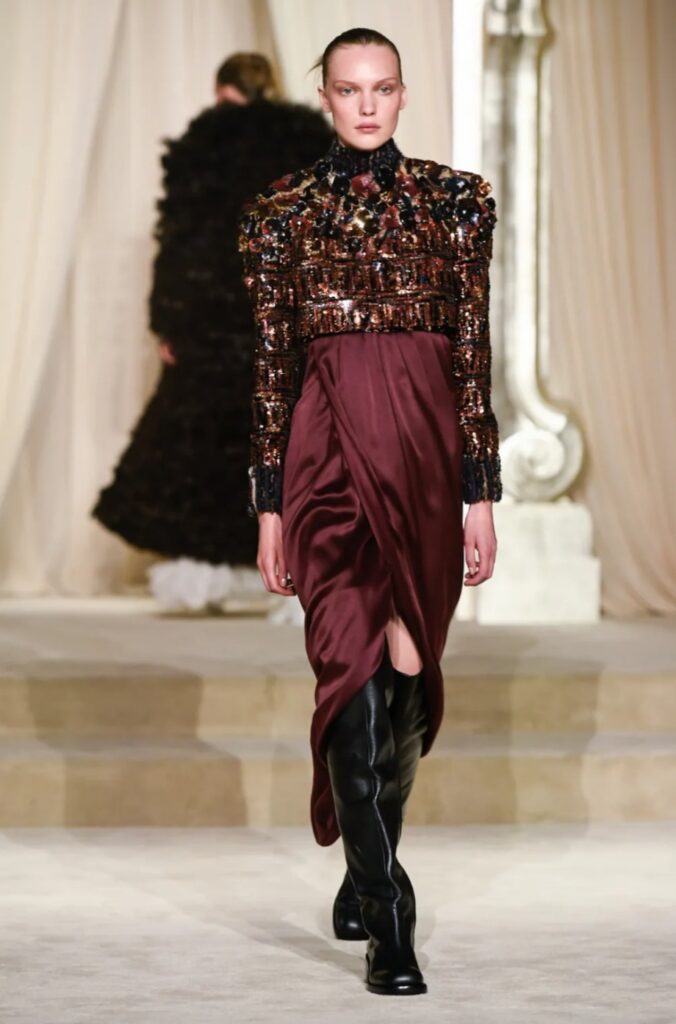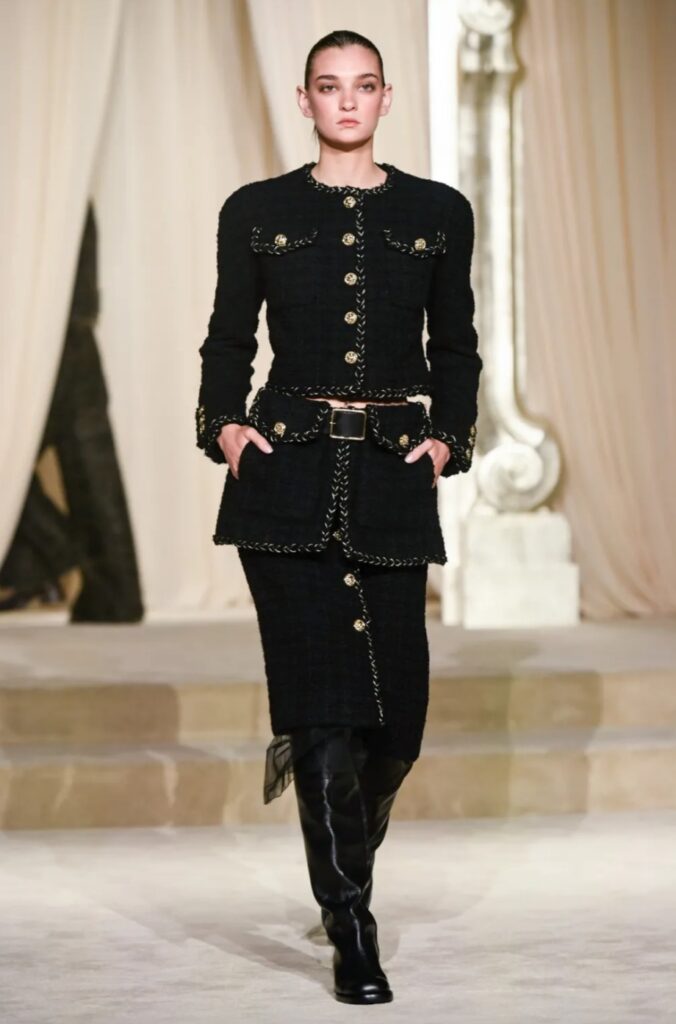I have a paradoxical impression: both familiar and strangely static. The rigidly cut jackets, the decorative accumulations overwhelming light fabrics, the dresses saturated with technicality to the point of losing their grace—all of this gave the collection a artisanal veneer, but one devoid of poetic momentum. It matters little how many hours are spent assembling a piece if its purpose is hard to grasp or if one struggles to imagine who would wear it.
Chanel remains a monument of couture, supported by decades of savoir-faire, history, and iconic figures. But, since Virginie Viard’s discreet departure, and while Karl Lagerfeld’s imposing shadow still looms over the house, this presentation felt like a soulless mechanism. The atelier can perpetuate the gestures, but it cannot invent a vision. Yet, Haute Couture lives only through its vision.
Certainly, CHANEL remains above all a commercial powerhouse, and its clients do not choose their dresses according to Instagram trends. However, to think that financial solidity is enough to maintain desire would be a strategic error. The history of luxury is marked by brands, once untouchable, that stumbled for not knowing how to reinvent themselves. Perhaps it is time to look towards KERING, where GUCCI is still striving to find its way.
Once a symbol of emancipation, the tweed suit is now frozen in a conventional nostalgia, unless a bold approach comes to shake it out of its patrimonial torpor. Let’s be honest: this last show did not descend into a fiasco, but neither did it leave a lasting impression. Instead, it gave the impression of a conventional exercise, an elegant interlude without any real risk-taking.
Eyes are now turning to September, a key moment when Mathieu Blazy, lauded for his brilliant work at Bottega Veneta, is expected to ascend the steps of Coco’s house. The whole question remains whether he will be able, or willing, to shatter conventions to reawaken a house that, for now, seems to be moving on autopilot like a dormant conclave.
FM


